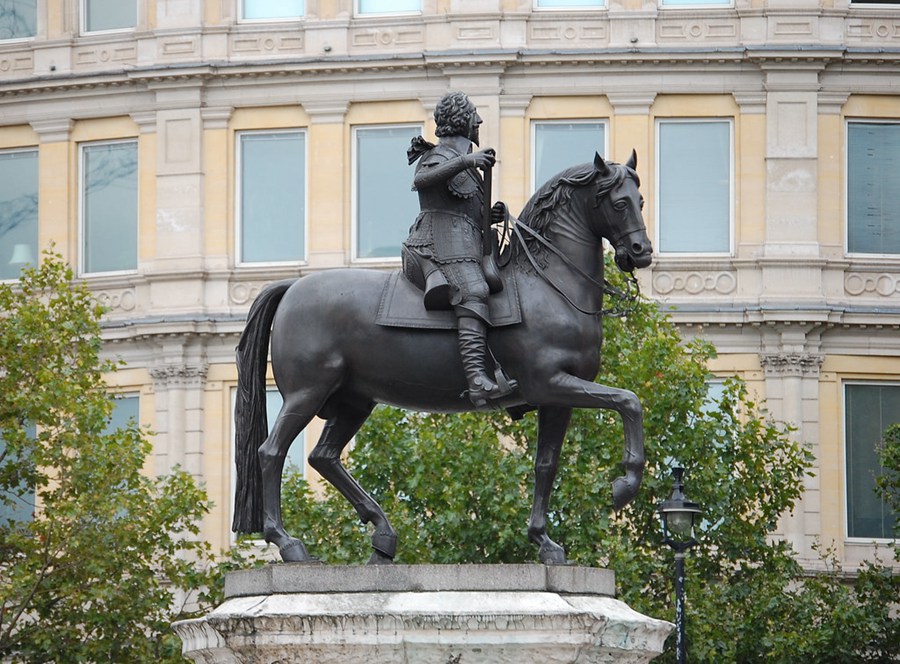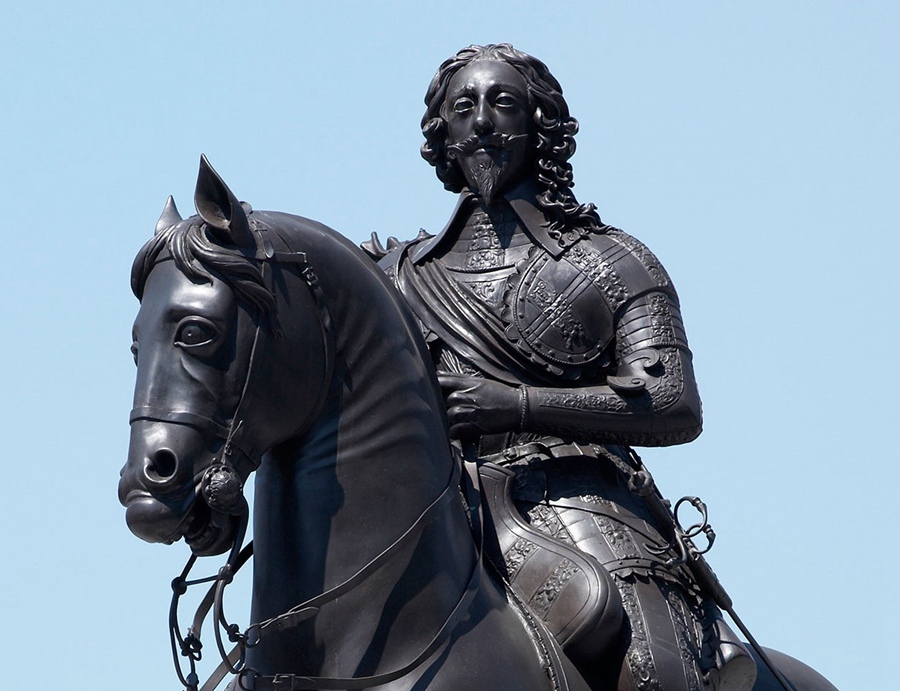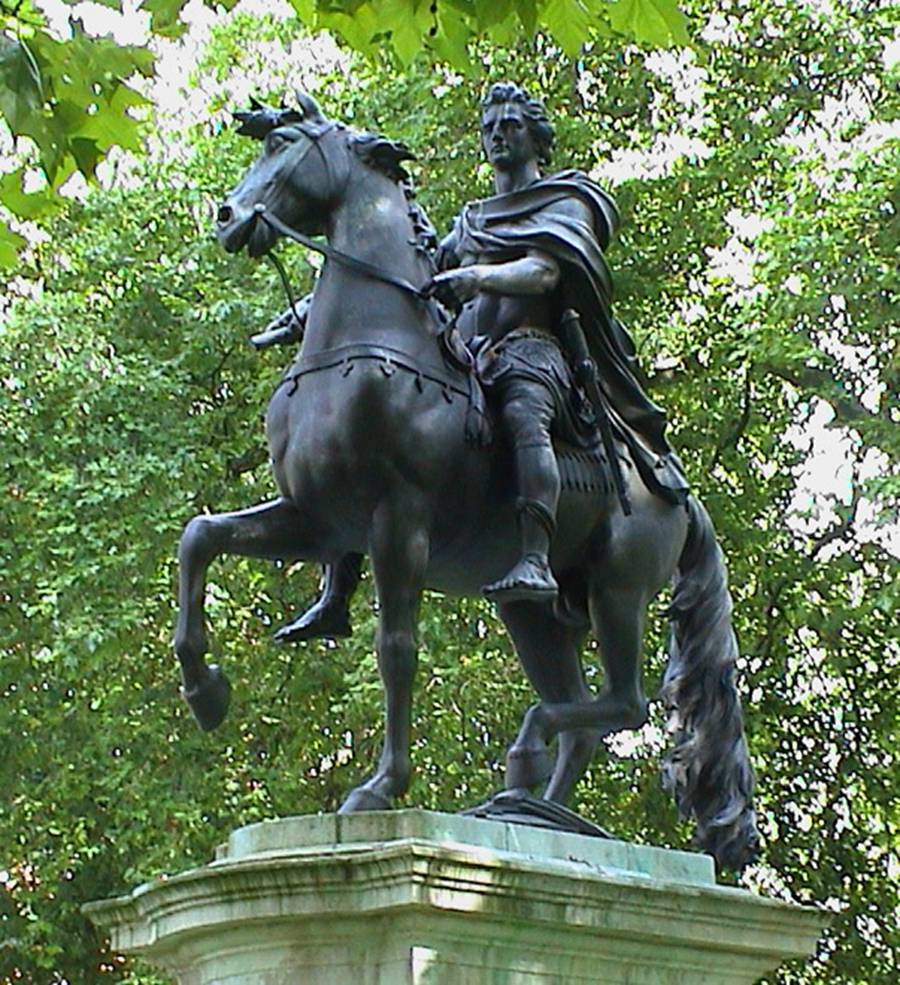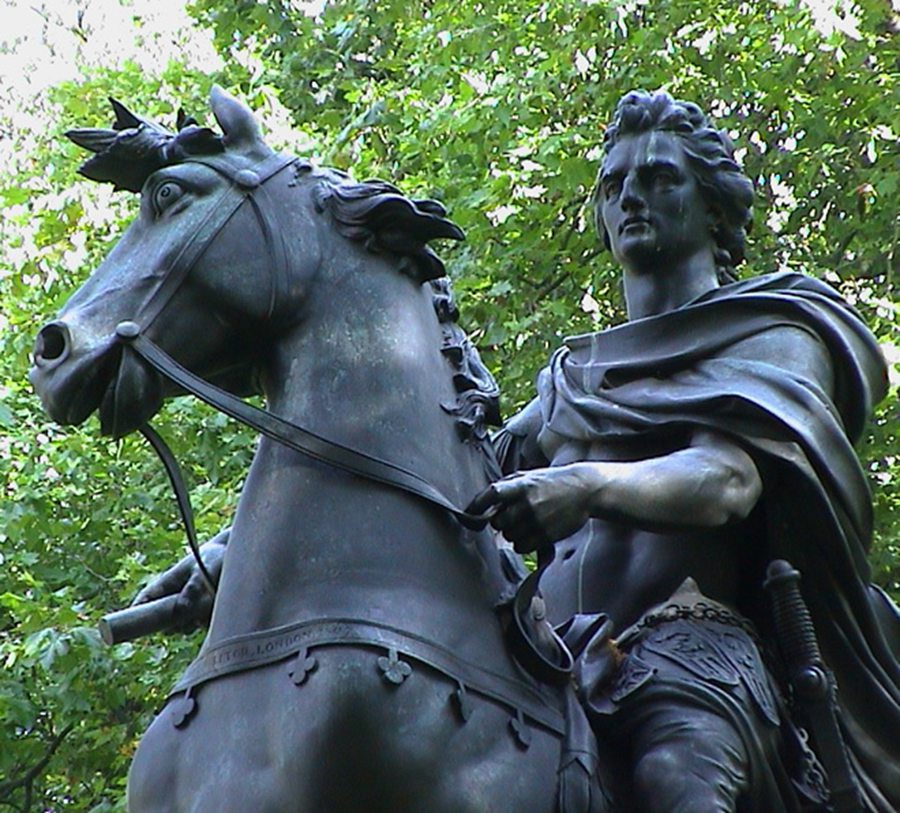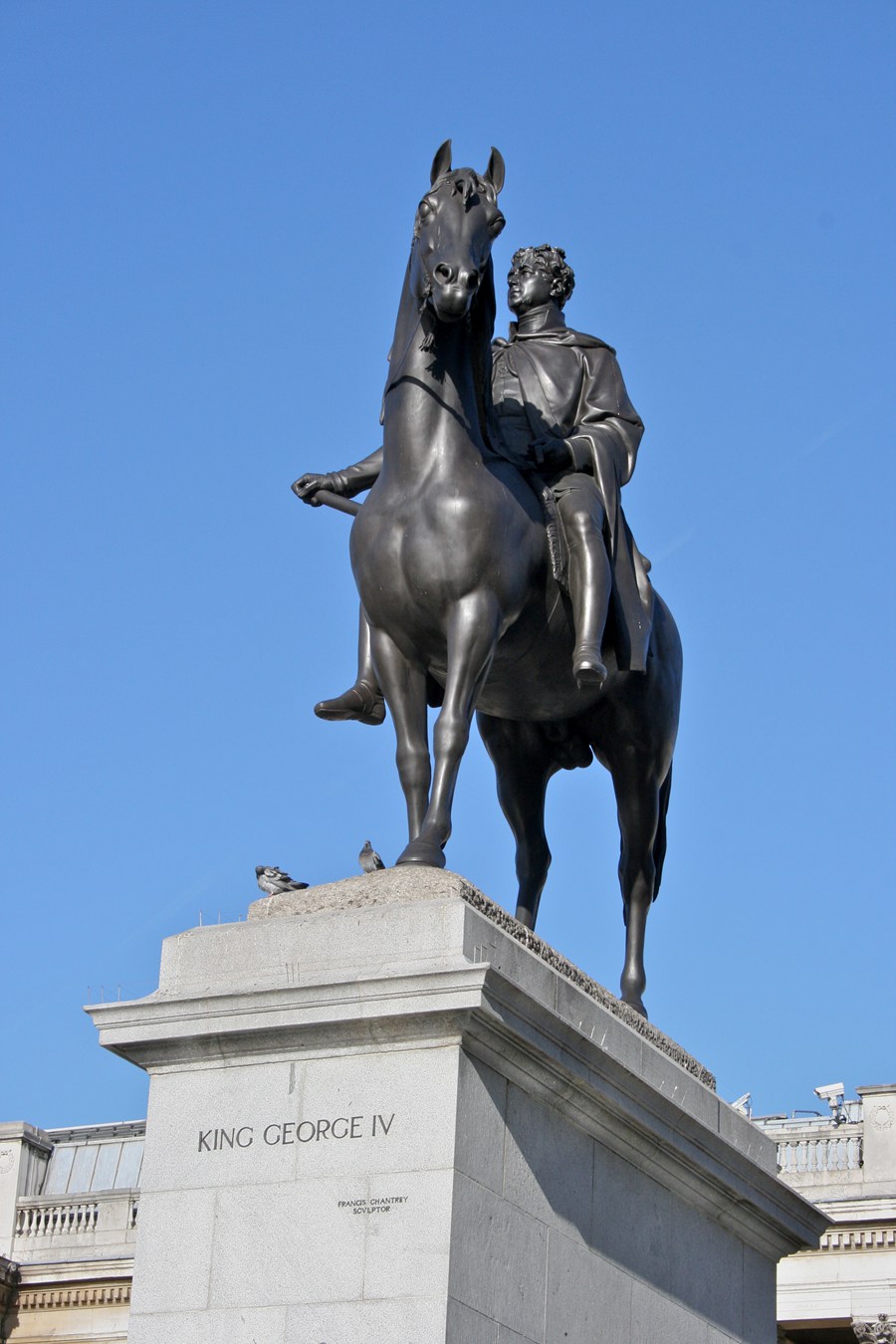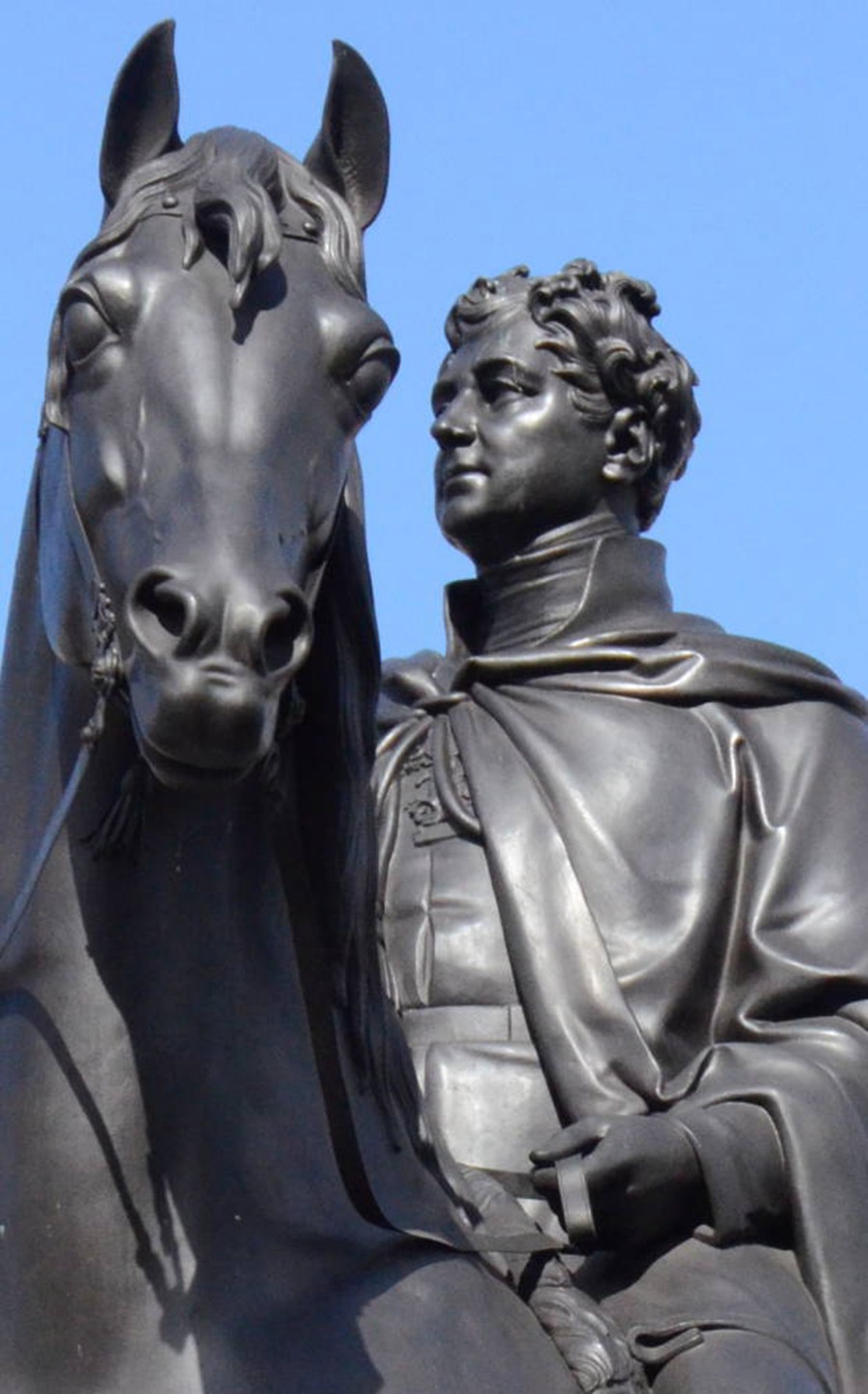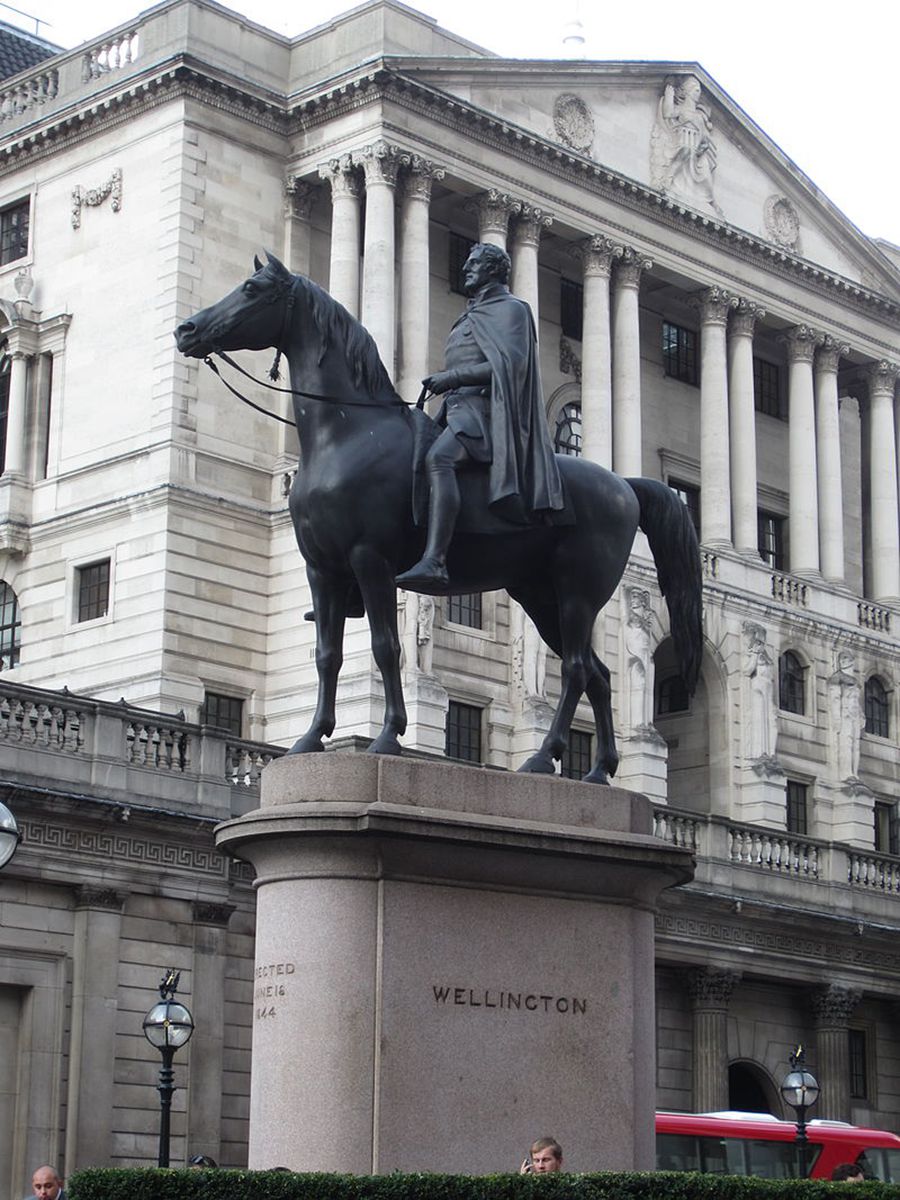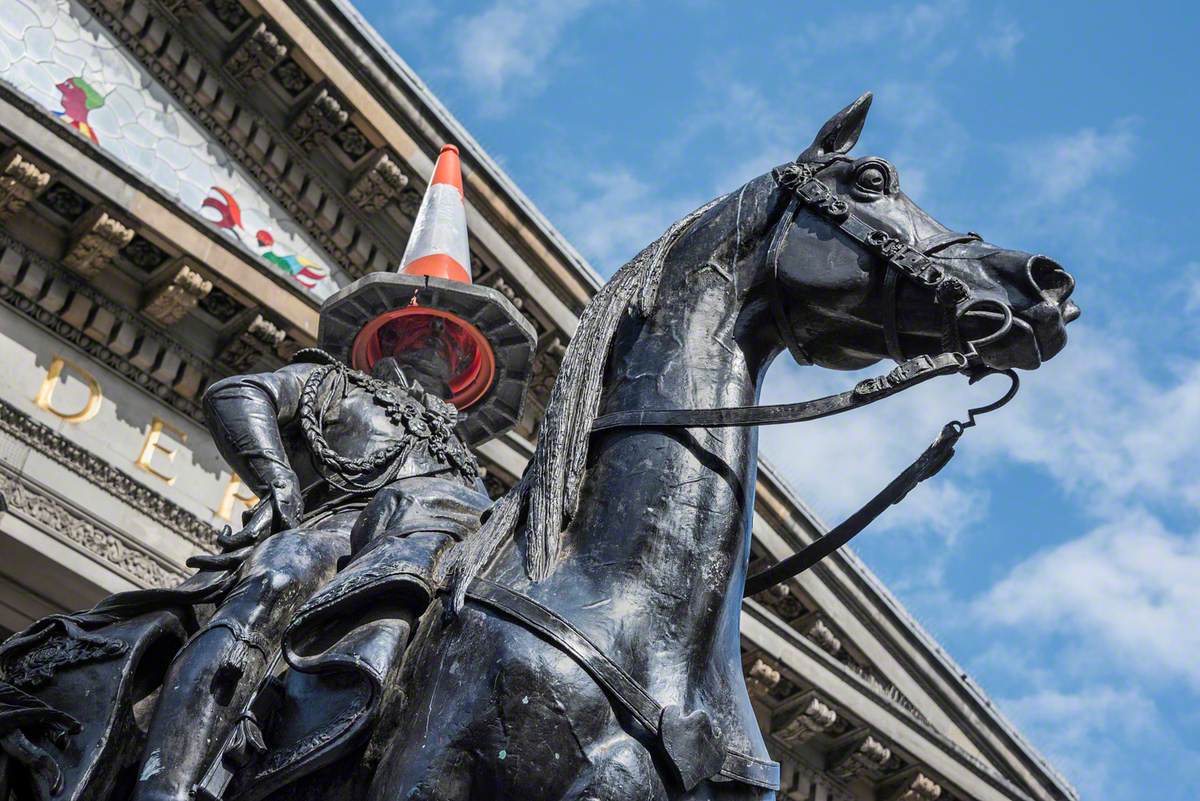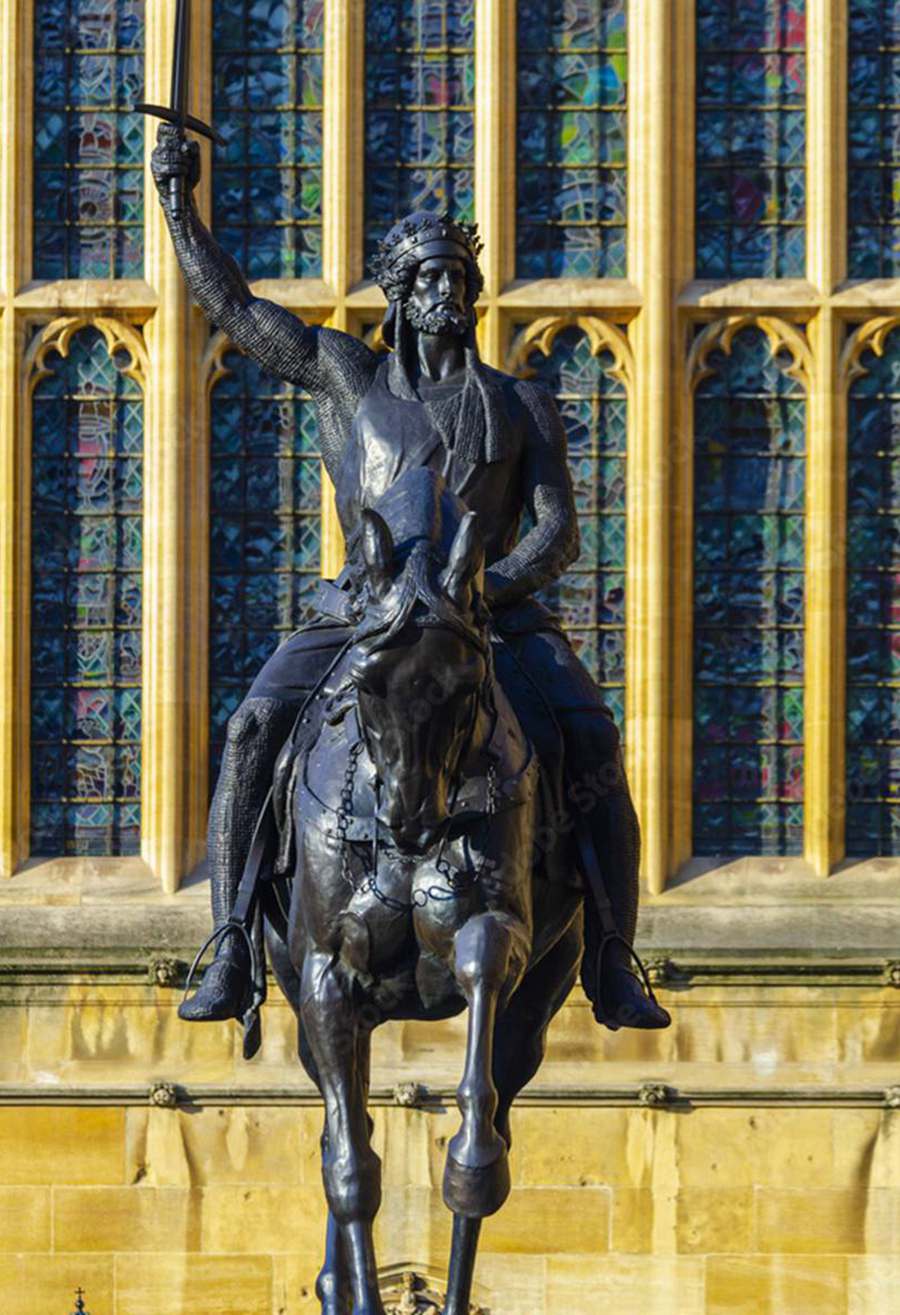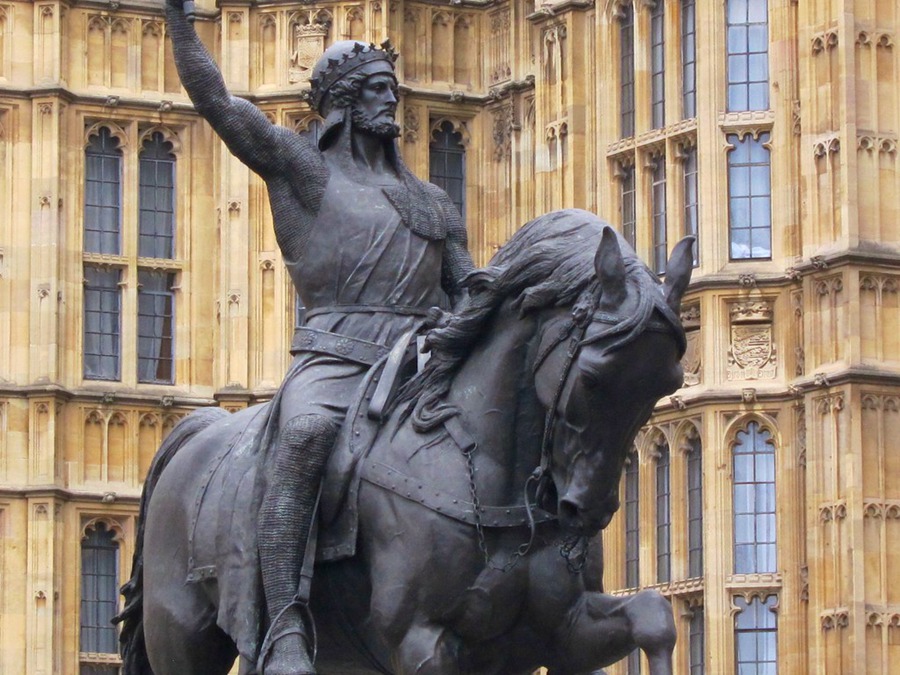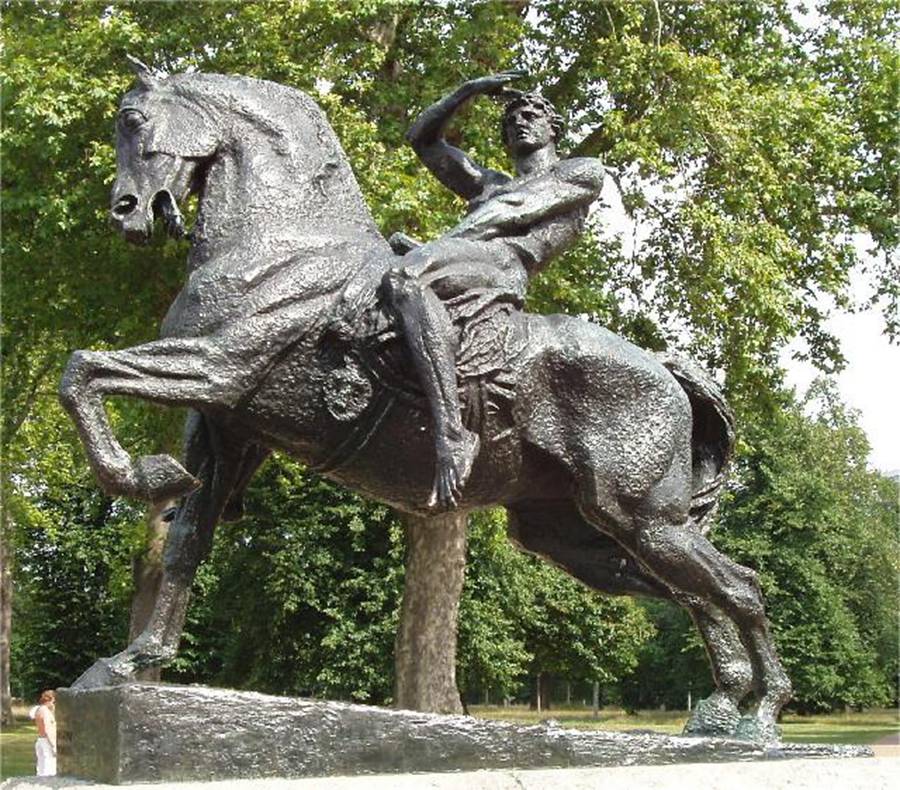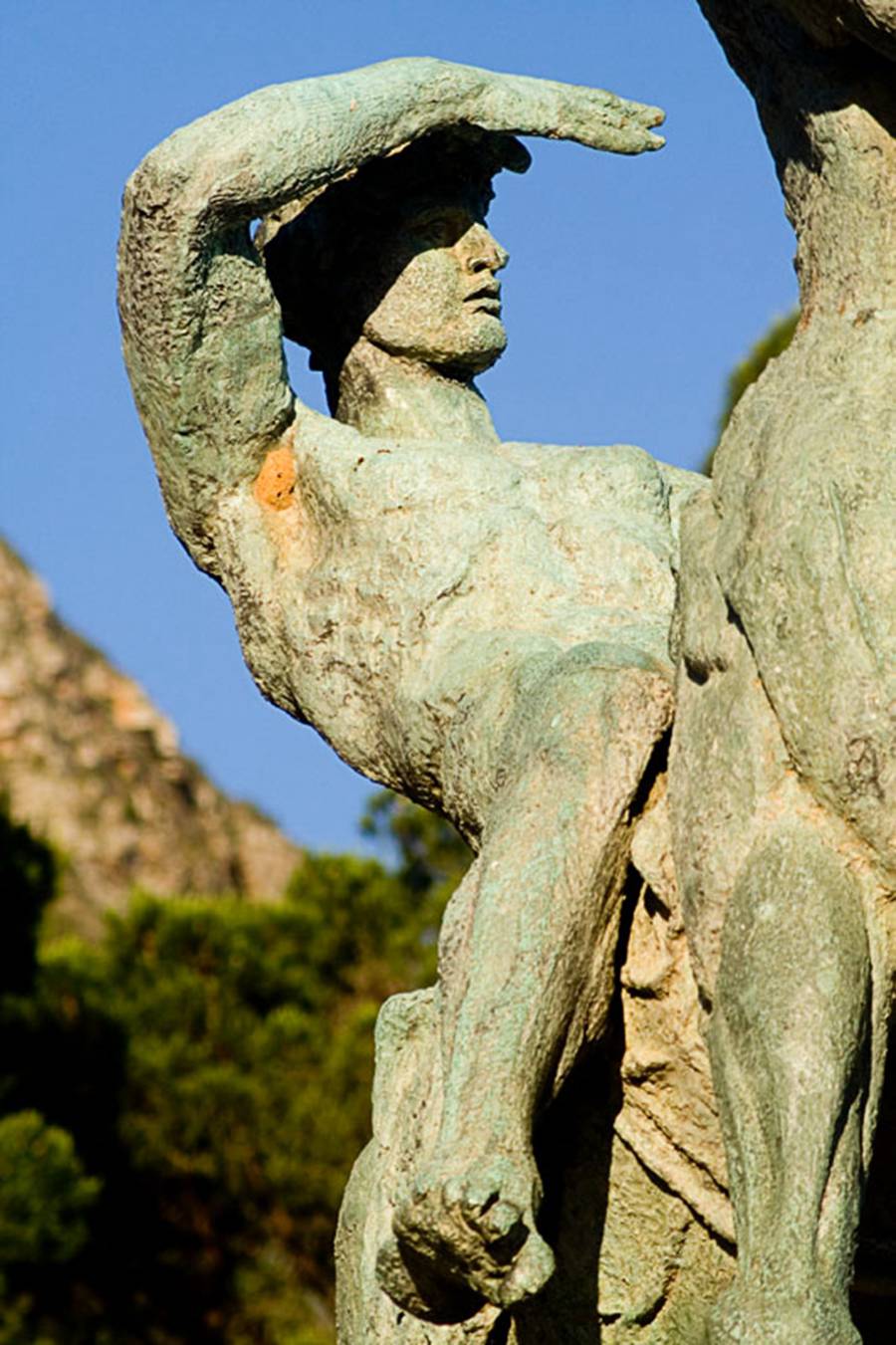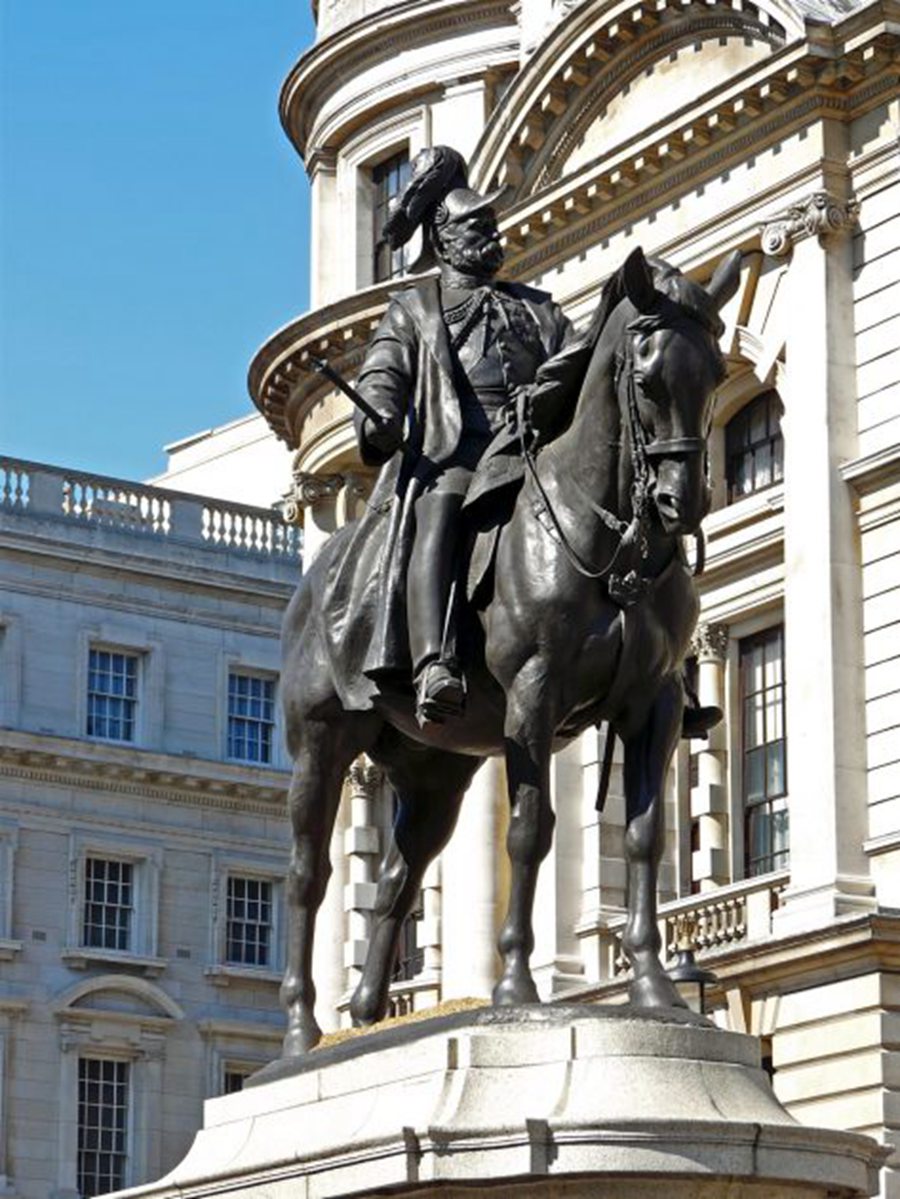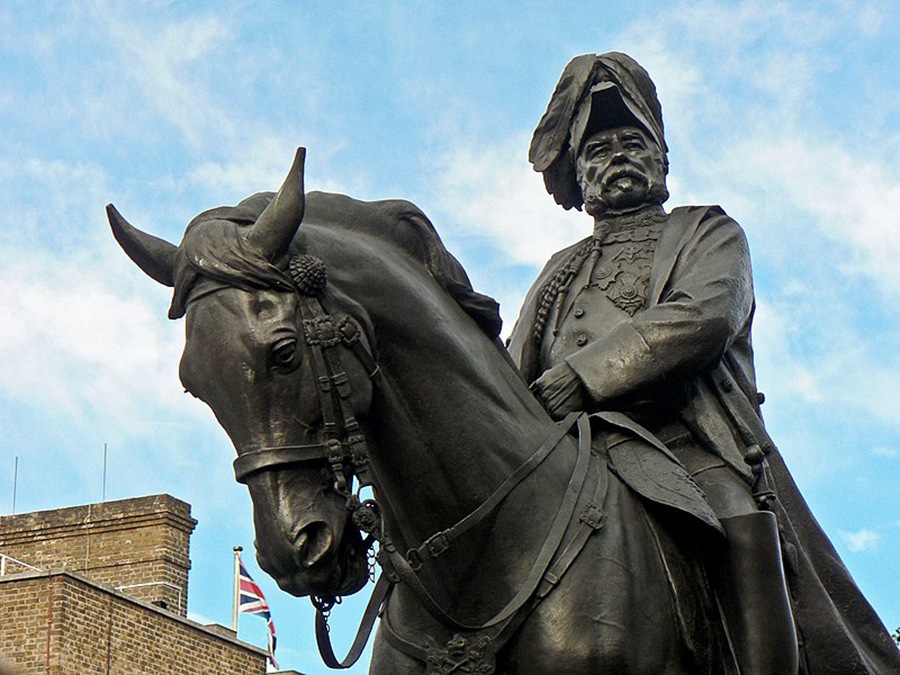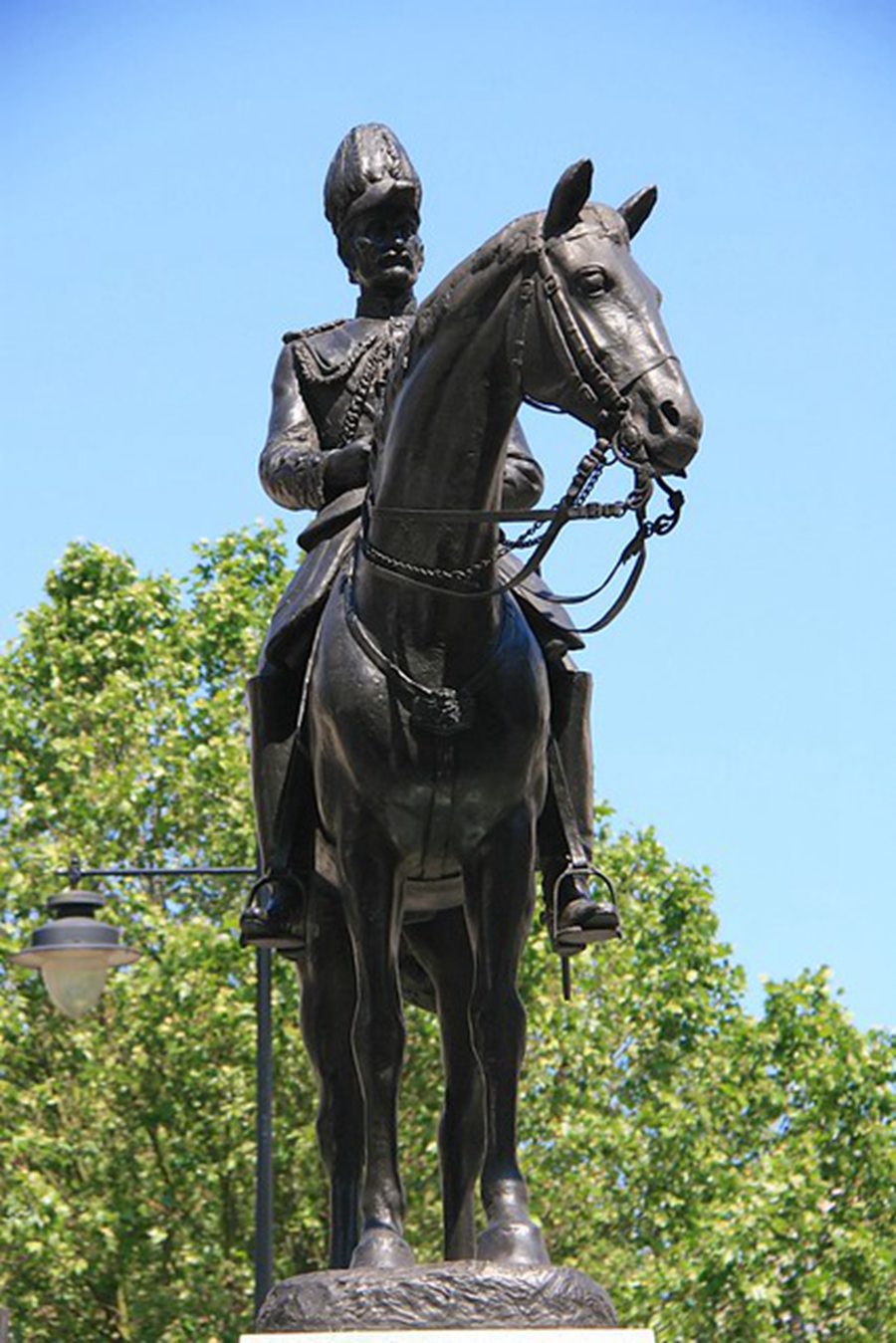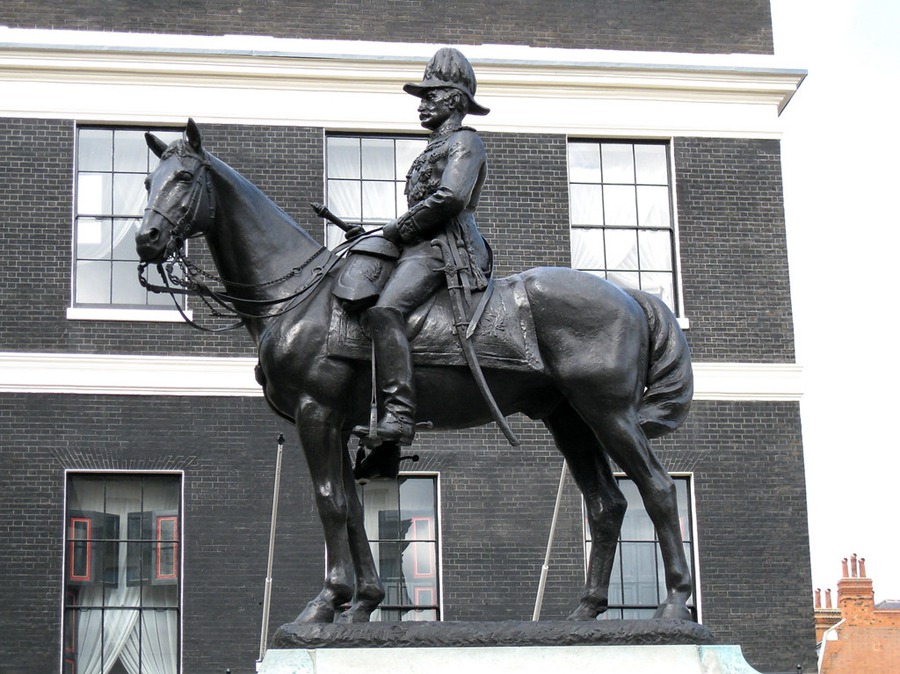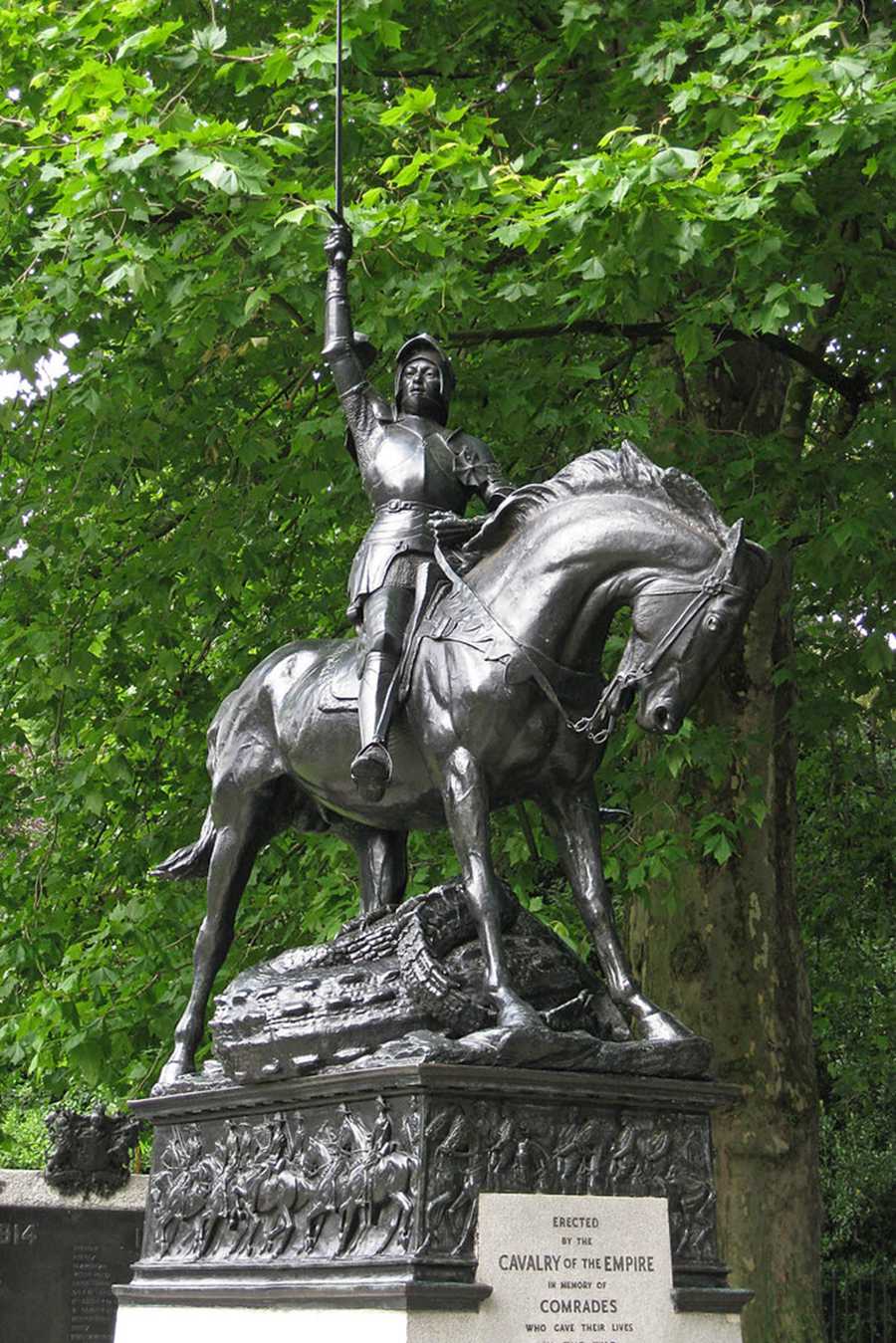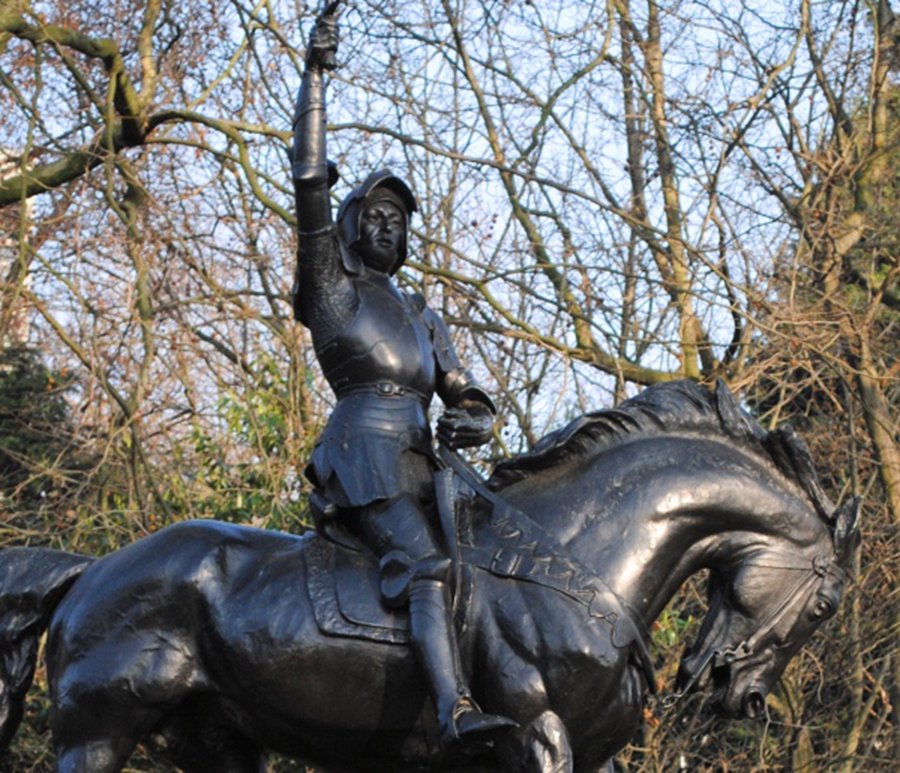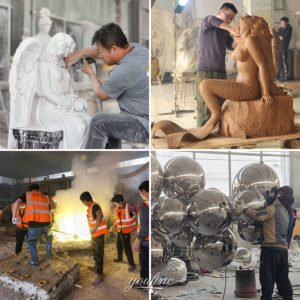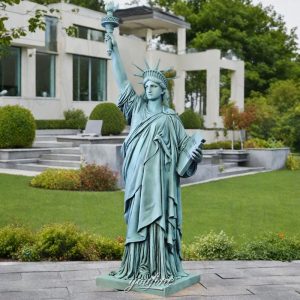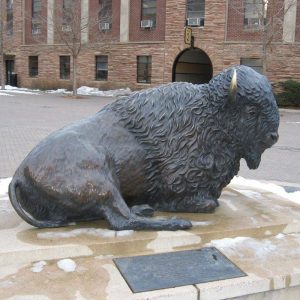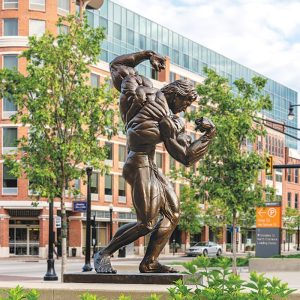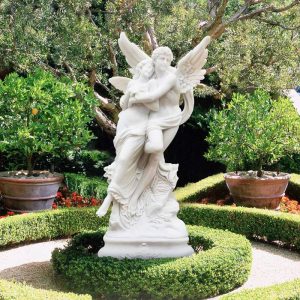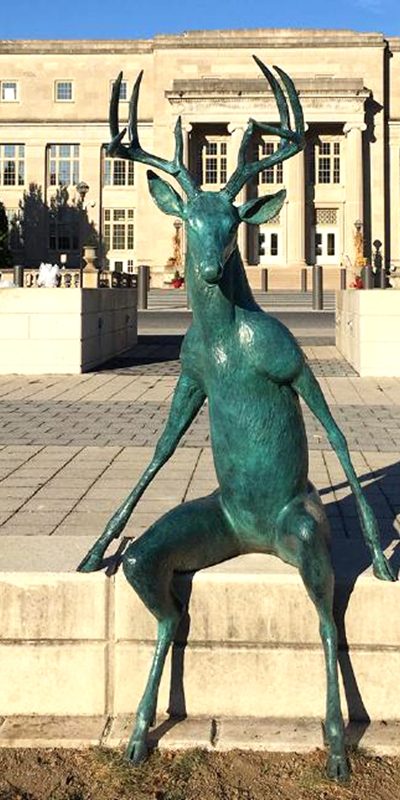In London, countless bronze equestrian statues are standing proudly and extraordinarily on the streets. Today we will explore the top 10 most famous bronze horseman statues in London and witness the perfect combination of sculpture art and history.
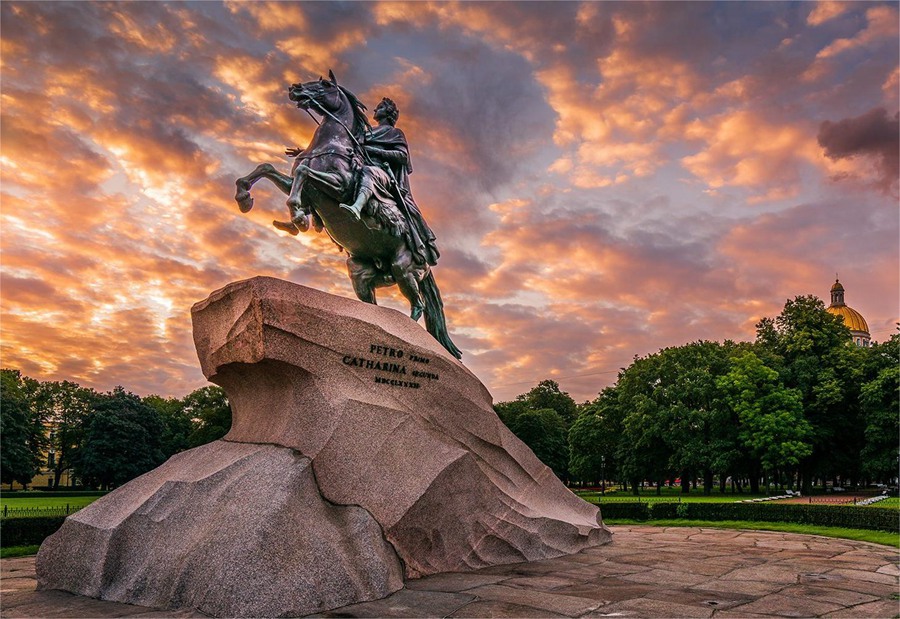
Top1. Equestrian statue of Charles I, Charing Cross
Considered the central point of London, the Equestrian statue of Charles I is the work of French sculptor Hubert Le Sueur and was cast in 1633. It is located in Charing Cross. This bronze horseman statue faces Whitehall, towards the Banquet Hall where Charles I was executed.
The statue shows Charles I of England on horseback. The king is wearing half armor but no helmet. He holds a baton in his right hand and the horse’s reins in his left hand. There is a scarf on the chest, tied in a bow on the right shoulder.
Top.2 Equestrian statue of William III, London
The Equestrian statue of William III stands in St. James’ Square in central London. It was created by John Bacon the Younger and is modeled on the early king’s statue in Queen’s Square, Bristol. It is a Grade I listed building. The panels on either side of the base bear an inscription in bronze letters, the first of which reads “GVLIELMVS III” and the second “I. BACON, IVNR”.
The sculpture is made of bronze and depicts William in the style of a Roman general, with the king sitting energetically on horseback. Although William’s dress style was classical, his hairstyle followed the fashions of the late 17th century.
Top3. Equestrian statue of George IV, Trafalgar Square
The Equestrian statue of George IV in Trafalgar Square, London, is a bronze equestrian statue designed by Sir Francis Legate Chantry, depicting the king in ancient Roman costume and riding a saddle.
The sculpture was originally designed to sit atop the marble arch at the entrance to Buckingham Palace, but was placed in its current location after the king’s death. George IV died in 1830 and the statue was placed on an empty pedestal in Trafalgar Square in December 1843, originally expected to be temporary, but it has remained there ever since.
Top4. Equestrian statue of the Duke of Wellington, City of London
The Equestrian statue of the Duke of Wellington, created by the sculptor Francis Legate Chantry, is an outdoor sculpture of the British soldier and statesman Arthur Wellesley, 1st Duke of Wellington, located at the Royal Exchange in London. It overlooks the Bank Interchange of the historic City of London.
To commemorate Wellington’s assistance to the City of London to secure the passage of a bill allowing the rebuilding of London Bridge. The equestrian statue was erected to express the city’s gratitude to Wellington for helping pass the London Bridge Approaches Act of 1827.
Top5. Richard Coeur de Lion
Richard the Lion is a Grade II listed equestrian statue depicting the 12th century English monarch Richard I. It stands on a granite pedestal in the Old Palace courtyard outside the Palace of Westminster in London, facing south towards the entrance to the House of Lords and popular with European royalty and nobility.
The bronze equestrian statues have bases 9 meters (30 ft) high and show King Richard I on horseback. The king wears a crowned helmet, a mail shirt and tunic, and holds a sword in the air. The horse stamped its paws on the ground as if preparing to charge into battle.
Top6. Physical Energy Sculpture
“Physical Energy” was first minted in 1902, two years before Watts’ death, to commemorate Watts’ “unknown value.” Watts said it symbolized “the restless bodily urge to seek something in the material realm that has not yet been achieved.” The sculpture is based on Watts’ earlier giant bronze equestrian statue of Hugh Lupus, 1st Earl of Chester.
The bronze horseman statue depicts a nude male figure riding an upright horse, placed on a rectangular wedge-shaped base. The man’s left hand holds the reins, and when he looks to the left, he shields his eyes with his right hand.
Top7. Equestrian statue of the Duke of Cambridge, Whitehall
The equestrian statue of Prince George, Duke of Cambridge, located in Whitehall, London, England, is a life-size monument designed by Adrian Jones. Architect John Belcher and sculptor Adrian Jones collaborated on the project.
The equestrian statue of George shows the magnificent Duke of Cambridge, appropriately mounted on a magnificent charger, with his flowing mane and tail biting into the bit.
Top8. Equestrian statue of the Viscount Wolseley
The Equestrian statue of the Viscount Wolseley by Sir William Goscombe John is an outdoor sculpture depicting Garnet Wolseley, 1st Viscount Wolseley, on Horse Guards Parade in London, England field. The equestrian statue was cast from the metal of guns captured during the campaign, and Lady Wolseley preferred to dress her husband in full marshal’s garb.
Top9. Equestrian statue of George Stuart White
The questrian statue of George Stuart White is a Grade II listed outdoor bronze sculpture located in Portland Place, London, England. Depicts Field Marshal Sir George Stuart White, a British Army officer who was awarded the Victoria Cross for gallantry in the face of the enemy during the Afghan conflict in 1879. The bronze statue was sculpted by John Tweed and unveiled in 1922.
Top10. Cavalry of the Empire Memorial
The Cavalry of the Empire Memorial is a war memorial in Hyde Park, London. It commemorates the service of the Cavalry Regiment in the First and Second World Wars and is a Grade II listed building.
The bronze equestrian statues were cast from guns captured by the cavalry in World War I and depict St. George slaying the dragon. Behind the statue is a wall inscribed with the names of all British, Indian, Australian, Canadian, New Zealand and Pakistani cavalry regiments from the First World War.
As I mentioned in the title, you can also have the same bronze equestrian statues, you just need to find a sculpture foundry that is professional enough. YouFine foundry was established in 1983, using the traditional lost wax method, able to provide customized sculpture services, and has unparalleled factory prices. You can contact them at any time and a professional will provide you with more detailed information.
